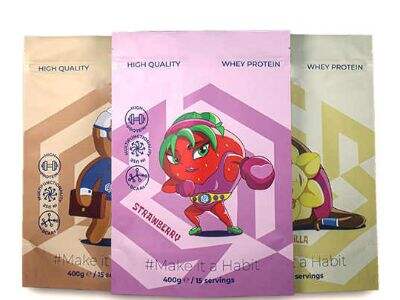What is Flexible Packaging?
Flexible packaging has a lot of significance when it comes to frozen food. It keeps food fresh, maintains its flavor and prevents freezer burn. This form of packaging is unique since it can be changed easily. Flexible packaging has many advantages that make it an ideal solution for frozen foods.
How Flexible Packaging Preserves Whatever Is Inside
Flexible packaging works extremely well when it comes to keeping food fresh. It is made up of various plastic materials, including polyethylene, polypropylene and polyester, laminated in layers. These are made of materials that trap moisture within the package, prevent air from getting in and keep freeze burn out. If air gets inside the packaging, it can dehydrate the food and make it taste bad. And one thing flexible packaging does is keep the air out, which helps the food remain good longer. This allows you to have your frozen food, and eat it too, without fear of spoiled food going bad too soon.
Flexible packaging on the rise
In many respects we have never looked back as over the years flexible packaging for frozen foods has become much more mainstream. It is because of its ease of use, reasonable pricing, and great performance that this growth has been experienced. Flexible packaging means easy storage — which means more food in your freezer. It is also light, so you can easily carry large quantities of it at once when moving or transporting food. Additionally, its lightweight features enable the reduction of shipping costs, which is advantageous for the manufacturers and the consumers.
Advantages of Flexible Packaging
Flexible packaging can provide many advantages for the frozen food category. First, it saves money. This makes food companies sell their products at lower prices easier for customers to buy their products. The second one is flexible packaging keeps the food fresh. This is helping reduce waste and is better for the planet because less food is sent to landfills. Flexible packaging is also adaptable. It is adaptable for various products or brands, which means companies can design distinctive packaging that draws attention in stores.
345 Different Uses of Flexible Packaging
Flexible packaging most commonly used for frozen food. Here are a few of its many uses:
Bags - Bags are the most widely used the form of flexible packaging for frozen foods. They are made to accommodate a variety of food products like vegetables, fruits, and even meat. Different materials can be used to make these bags, such as plastic, paper, or foil, to protect different types of food.
Another common type of flexible package is pouches. They can be handy for snacks and ready-to-eat meals, which are useful for time-poor people. As a laminate pouch can be printed with pictures and brand names, these printed pouches are eye-catching for customers.
Examples of what should be discarded are: Wrappers: Wrappers are often used to package individual food items, like ice cream bars and candies. They are made to defend the food from outside source and preserve it fresh. The wrappers can be plastic, foil or paper, based on the kind of food they are made to protect.
Boxes — Used for larger food items, such as frozen pizzas and hot meals. They also offer additional protection during transportation and storage, ensuring the food inside remains safe and fresh. Boxes ensure the food is safe until it is time to cook and eat with their sturdy design.
The Upsides of Flexible Materials
Miller Film, who specializes in flexible packaging for frozen foods, has a number of advantages that are beneficial to the frozen food industry. For one, they’re light, which also helps keep transportation costs down. Which allows companies to cut on shipping costs and give their customers the same discounts. Flexible packaging films are also resist to damage in the case of transportation and storing. That durability is part of what helps ensure the food is safe and fresh. Finally, flexible packaging can be tailored for special branding, which makes it a way for companies to create unique packs that have customer appeal.
Conclusion
Thus, flexible packaging is extremely critical for frozen food. It has many advantages, including saving money, creating less waste and preventing products from going bad. Keep in mind the increase in frozen food purchases have led to an increase in use of flexible packaging. Lepu: Ready to Customize High Quality Flexible Packaging Solutions for Frozen Food. Our new technology and experience may lead food makers and sellers to reach their goals and make food appealing to customers.
 EN
EN
 AR
AR
 HR
HR
 CS
CS
 DA
DA
 NL
NL
 FI
FI
 FR
FR
 DE
DE
 EL
EL
 IT
IT
 JA
JA
 KO
KO
 NO
NO
 PL
PL
 PT
PT
 RO
RO
 RU
RU
 ES
ES
 SV
SV
 TL
TL
 IW
IW
 ID
ID
 LV
LV
 LT
LT
 SR
SR
 SK
SK
 SL
SL
 UK
UK
 SQ
SQ
 ET
ET
 TH
TH
 TR
TR
 FA
FA
 AF
AF
 MK
MK
 UR
UR
 BN
BN


